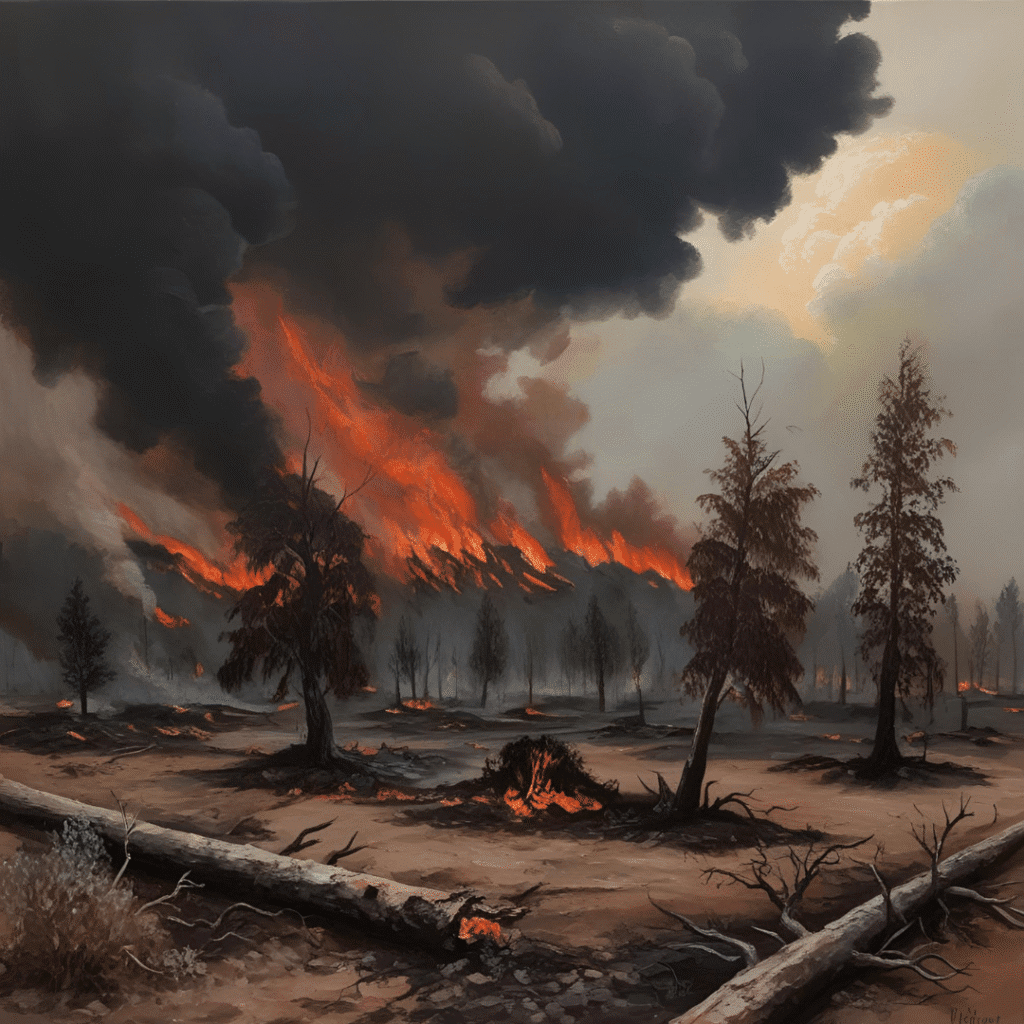Massive Wildfires in Israel: A Crisis of Climate, Negligence, and National Impact

In late April 2025, Israel experienced one of the most devastating wildfires in its recent history, engulfing vast areas of forest, prompting mass evacuations, disrupting transportation, and raising serious questions about preparedness in the face of environmental disasters. This unprecedented event has shaken the nation and caught international attention due to its scale, speed, and the political tensions surrounding its possible causes.
The Fire’s Outbreak and Spread
The fires began in the Judean Lowlands near Latrun, southwest of Jerusalem. Fueled by dry weather, high winds, and dense vegetation, the flames quickly spread eastward and southward. Within a matter of hours, the fire had consumed over 20,000 dunams (approximately 5,000 acres) of land, including nearly 13,000 dunams of forest, making it one of the largest wildfires in the country’s history.
The flames soon reached areas dangerously close to Jerusalem, triggering panic among residents and leading to the shutdown of Highway 1, the major artery between Jerusalem and Tel Aviv. Train services between Modi’in and Jerusalem were also suspended, further complicating evacuations and emergency response.
Evacuations and Injuries
More than 7,000 residents were evacuated from nearby towns and settlements, with firefighters working around the clock to protect lives and property. The Israeli health ministry reported that 18 people were hospitalized, including pregnant women and children, due to smoke inhalation and minor burns. Meanwhile, 17 firefighters were injured while battling the intense blaze, some suffering from heat exhaustion and smoke exposure.
Emergency services, including Magen David Adom, were deployed en masse, and temporary shelters were set up for the displaced. The Israeli government declared a state of emergency in the affected regions, calling in reinforcements from neighboring municipalities.
Environmental and Health Impacts
Beyond immediate human and economic costs, the wildfire had significant environmental repercussions. Forest ecosystems in the Judean hills, home to native flora and fauna, were severely damaged. In some areas, over 70% of tree cover was lost.
The air quality in Jerusalem reached dangerous levels, becoming temporarily ranked among the worst in the world. Thick plumes of smoke covered the skyline, prompting public health warnings and school closures. For several days, residents were advised to stay indoors, use air purifiers, and wear masks.
Environmental experts warned that the full extent of the ecological damage could take decades to recover.
Investigation and Allegations
While the cause of the fire is still under investigation, early reports suggest a combination of climatic conditions, negligence by hikers, and possibly arson. Israeli police arrested three suspects on charges of intentionally starting fires in forested areas.
The situation grew more tense after reports surfaced that Hamas-affiliated Telegram channels had called for Palestinians to set fire to forests and Israeli infrastructure. While no direct link has been confirmed, the Israeli security establishment is taking the matter seriously, amid ongoing regional tensions.
Authorities have also been criticized for not being adequately prepared, with some local officials questioning whether firefighting equipment and aerial resources were sufficient to handle fires of this magnitude.
Impact on National Events
The wildfires coincided with preparations for Israel’s Independence Day (Yom Ha’atzmaut), a time usually marked by nationwide celebrations. Due to safety concerns and the somber atmosphere, major events in Jerusalem, Tel Aviv, Beersheba, and other cities were canceled. The iconic torch-lighting ceremony on Mount Herzl, a traditional highlight of Independence Day, was called off for the first time in decades.
Prime Minister Benjamin Netanyahu expressed his condolences and praised the bravery of first responders, stating, “We will rebuild what has burned. But first, we will protect every life.”
Climate Change and a Growing Pattern
Experts say this wildfire is not an isolated incident but part of a growing pattern linked to climate change. Over the past decade, Israel has seen an increase in the frequency and severity of forest fires, especially during the spring and summer seasons. Reduced rainfall, rising temperatures, and prolonged droughts have turned the country’s green belts into highly flammable zones.
Dr. Liora Carmon, a climate scientist at the Hebrew University of Jerusalem, commented, “We are witnessing the effects of a warming planet. Fires like this may soon become the norm unless we make urgent policy changes.”
International Support and Response
Several countries, including Greece, Cyprus, and Italy, offered to send firefighting aircraft and crews to assist Israel, echoing the international solidarity seen during the 2010 Carmel forest fire disaster. Though Israeli officials declined outside help at the time, they acknowledged the importance of building regional cooperation to combat natural disasters.
Looking Ahead
As the smoke clears, Israel is left with a sobering reminder of its environmental vulnerability. Calls are growing for the government to invest in early warning systems, better forest management, and firefighter training programs. NGOs and environmental groups are also urging stronger action on climate change and community awareness programs to reduce human-caused fires.
This wildfire, while tragic, may serve as a wake-up call—not only for Israel but for the world—about the urgent need to prepare for an era of more frequent and destructive natural disasters.




